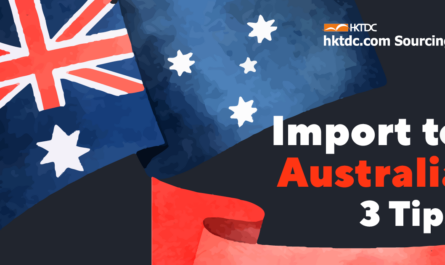Australia’s sourcing environment is undergoing rapid transformation, presenting both opportunities and challenges for global buyers and suppliers. This article will explore the key trends shaping Australia’s sourcing landscape in 2026, offering insights to help you make informed decisions and optimize your sourcing strategies.
1. Supply Chain Resilience and Diversification
Recent global disruptions have highlighted the need for more resilient and diversified supply chains. Ongoing trade tensions between the U.S. and China, coupled with geopolitical instability, pose risks to Australian supply chains—in response, many Australian businesses are adopting a “China-plus-one” strategy, diversifying their supplier base to reduce reliance on a single source. Manufacturers also consider reshoring operations and investing in local suppliers to enhance supply chain resilience.
Impact for Global Buyers & Suppliers:
- Assess and mitigate risks associated with geopolitical instability and trade disruptions.
- Explore alternative sourcing locations to diversify your supply base.
- Consider partnering with Australian manufacturers to support local production.
2. Key Sector Opportunities in Australia
Several sectors in Australia are poised for growth in 2026, presenting significant opportunities for global buyers and suppliers:
- Agribusiness: Strong export markets and rising domestic meat prices drive expansion in the agribusiness sector, with a promising estimated imports of AUD$30.9 billion.
- Healthcare & Social Assistance: Australia’s aging population supports continued expansion in healthcare, aged care and community services, where healthcare services is Australia’s largest employer with more than 2.23 million employees.
- Construction: Infrastructure and residential projects drive growth in the construction sector, which contributes over AUD$568 billion according to the Australian Bureau of Statistics.
- Resources and Energy: While overall resource and energy export earnings are expected to soften, gold and lithium exports are projected to increase with 27.9% of revenue growth in 2026.
- Electric Vehicles: The electric vehicle (EV) market is experiencing rapid growth, driven by government incentives and expanding charging infrastructure.
Impact for Global Buyers & Suppliers:
- Identify and target key sectors with high growth potential.
- Tailor your products and services to meet the specific needs of these sectors.
- Establish partnerships with local businesses to capitalize on market opportunities.

3. Evolving Workforce and Skills
Australia’s manufacturing sector faces workforce shortages and a widening skills gap, as noted by the Australian corporate clients of workplace consultancy Nickaz. They also realized the importance of skills-based hiring, where employers are increasingly valuing skills and experience over formal qualifications. There is also a growing focus on upskilling existing staff and providing access to training opportunities.
Impact for Global Buyers & Suppliers:
- Consider the availability of skilled labor when making sourcing decisions.
- Invest in training and development programs to address the skills gap.
- Promote diversity and inclusion in your workforce to attract and retain talent.
4. Sustainability and ESG are Paramount
Environmental, social, and governance (ESG) considerations are no longer optional; they are now central to procurement strategies in Australia, as the Australian government is leading the charge with its Environmentally Sustainable Procurement Policy, which requires businesses bidding for government projects to meet specific sustainability outcomes. This policy, which came into effect in July last year, initially focused on construction services but has expanded to include textiles, ICT goods, and furniture. The key focus is on promoting a circular economy by reducing waste, reusing materials, and ensuring resources remain in use for longer.
In commercial settings, companies are increasingly using supply chain contracts to realize their ESG objectives, ensuring their suppliers align with their sustainability goals. Businesses are under growing pressure to track and reduce their environmental impact, especially in areas like carbon emissions (Scope 3 Emissions) across their supply chain.
Impact for Global Buyers & Suppliers:
- Prioritize suppliers with strong ESG credentials and sustainable practices.
- Be prepared to meet stringent environmental requirements for government tenders.
- Embrace circular economy principles in your product design and supply chain management.
Dynamic Sourcing Landscape in Australia
Australia’s sourcing landscape in 2026 presents a dynamic mix of opportunities and challenges. By understanding the key trends outlined in this article, global buyers and suppliers can develop effective sourcing strategies, mitigate risks, and capitalize on the growth potential of the Australian market.
Get the help from a trusted e-commerce platform such as hktdc.com Sourcing to optimize your sourcing efforts and reap the most benefits when navigating the Australian market!
Australia Sourcing FAQ
1. What are the key sourcing trends in Australia for 2026?
The key trends include a focus on sustainability and ESG practices, supply chain resilience and diversification, growth in specific sectors like agribusiness and healthcare, and navigating evolving trade dynamics.
2. What’s the key impact for buyers and suppliers following these trends?
Global buyers and suppliers must stay informed of geopolitical and trade dynamics across the region, and prioritize sourcing with strong sustainability practices, sectoral capabilities, and reliability in terms of supply chain management.
3. What sectors in Australia are expected to grow in 2026?
Key growth sectors include agribusiness, healthcare and social assistance, construction, resources and energy, and electric vehicles.
4. Where can I find more information about these trends?
For more insights, consider industry reports, government publications, and reputable market research organizations focusing on Australian sourcing and procurement trends.
- The Future of Procurement in Australia: Top 5 Trends for 2025 – ASR Recruitment
- Australian manufacturing 2025–2026: A sector at the crossroads of innovation, pressure, and promise – RSM Global
- Workplace Trends 2025–2026 | Nickaz Australia
- Biggest Importing Industries in Australia in 2026 – IBISWorld
- Fastest Growing Industries in Australia by Revenue Growth (%) in 2026 – IBISWorld
- Sustainable Procurement – DCCEEW








